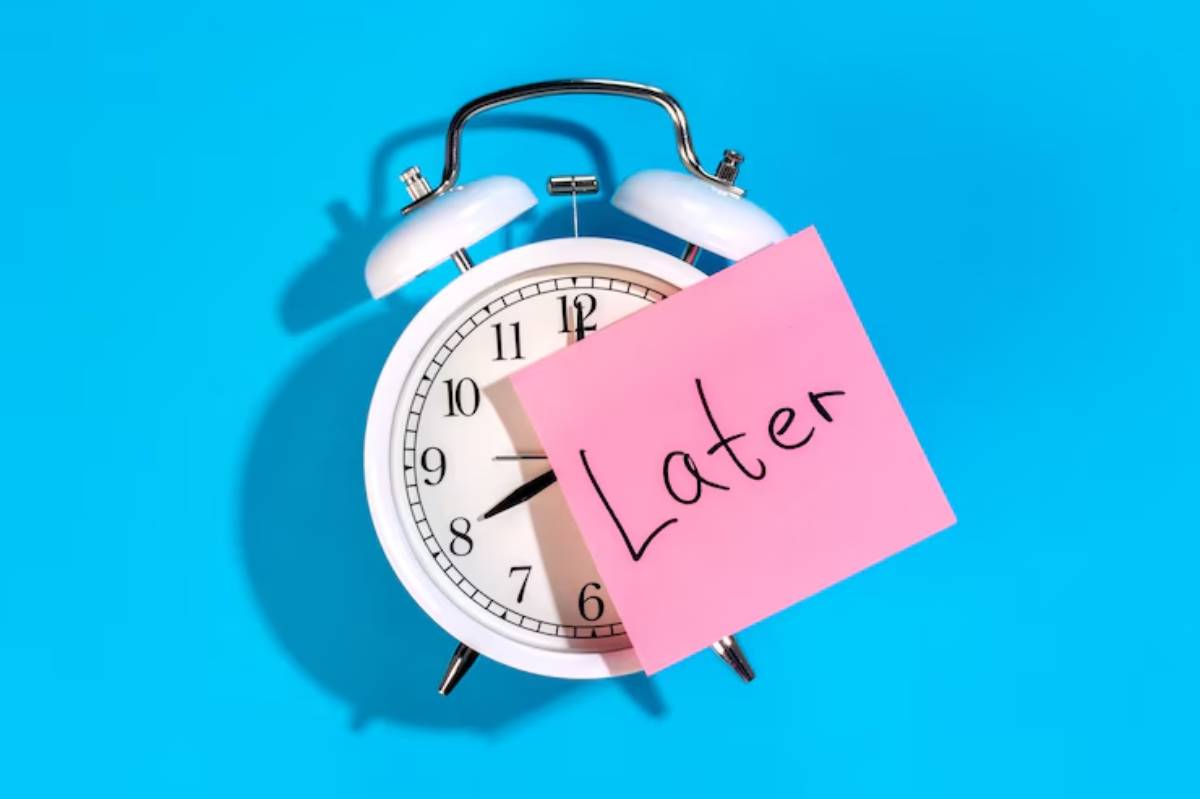
The Science of Avoidance: What Drives Chronic Procrastination
We’ve all been there—staring at the task list, knowing what needs to be done, yet doing everything else instead. Whether it’s cleaning out the fridge, scrolling endlessly, or diving into a YouTube rabbit hole, procrastination creeps in. But have you ever asked yourself why?
This isn’t just about laziness or poor time management. At the heart of chronic procrastination lies a complex web of avoidance behaviour and mental patterns. In this article, you’ll discover the psychology behind chronic delay, the science of avoidance, and practical steps to shift out of the loop.
You’ll walk away with a clearer understanding of your brain’s inner workings—and how to work with it rather than against it.
What Is Chronic Procrastination?

Procrastination becomes chronic when it’s no longer an occasional hiccup but a recurring pattern that interferes with your personal and professional life. It’s not just putting off a tedious task; it’s the persistent inability to follow through, even when the stakes are high.
Key signs of chronic procrastination:
- Constantly delaying important tasks
- Struggling with decision paralysis
- Feeling overwhelmed even before starting
- Guilt, anxiety, or self-criticism about not doing enough
While it might feel like a character flaw, research tells a different story. It’s not about not caring. In many cases, chronic procrastinators care deeply, sometimes too much.
The Brain’s Role in Procrastination Patterns
Procrastination is fundamentally a battle between two parts of the brain:
- The limbic system, our emotional centre, seeks immediate relief from discomfort or stress.
- The prefrontal cortex, our rational decision-maker, pushes us toward long-term goals.
When avoidance wins, the limbic system overrides the prefrontal cortex, prioritising short-term relief over long-term achievement.
Why avoidance behaviour feels rewarding:
Every time you dodge a stressful task, your brain gets relief. That tiny relief? It’s a dopamine release. Over time, this creates a reinforced loop:
Task causes discomfort → You avoid it → You feel relief → Brain registers avoidance as success → You repeat the cycle
This explains why dopamine and distraction often go hand in hand with productivity blockers.
Avoidance Behaviour: Emotional Over Logic
Avoidance behaviour isn’t random—it’s emotionally driven. Chronic procrastination usually masks an uncomfortable emotion:
- Fear of failure (“What if I mess this up?”)
- Perfectionism (“It’s not ready until it’s perfect.”)
- Low self-worth (“I’m not good enough to finish this.”)
- Resentment or boredom (“Why do I even have to do this?”)
By avoiding the task, we momentarily escape these feelings. But that emotional avoidance only reinforces the delay.
Emotional avoidance can be subtle:
You might think you’re “waiting for the right mood,” but you’re avoiding the emotional discomfort of starting. Research from Dr Tim Pychyl, a leading procrastination expert, shows that emotional regulation is one of the strongest predictors of procrastination behaviour.
The Hidden Cost of Chronic Delay
Procrastination isn’t a harmless habit—it comes with emotional, mental, and even physical consequences.
Mental Costs:
- Ongoing stress and anxiety
- Reduced self-esteem
- Difficulty concentrating
Emotional Costs:
- Guilt and shame cycles
- Frustration with oneself
- Fear of disappointing others
Practical Costs:
- Missed deadlines
- Poor work performance
- Strained relationships
When these effects accumulate, they often lead to learned helplessness—the belief that you’ll never overcome the cycle no matter what you do. However, that belief can change with awareness and strategy.
Avoidance vs. Action: The Identity Conflict
Procrastination isn’t just about what you do—it’s tied to how you see yourself. If you believe you’re the person who always delays, your actions will match that identity.
In contrast, your behaviour shifts accordingly when you start identifying as someone who follows through, even on small things. That’s why identity-based habits are such a powerful tool for change.
Learn more about how to become the person who finishes things and align your self-image with action.
Rewiring the Brain: The Role of Neuroplasticity
The good news? The brain is not fixed. We can rewire our habits and thought patterns over time thanks to neuroplasticity.
Here’s how to break the chronic procrastination loop:

- Notice the emotion you’re avoiding. Pause before a task and ask: “What am I feeling right now?” Naming the emotion disrupts the automatic avoidance pattern.
- Practice’ urge surfing’. Ride the wave of discomfort without acting on it. Often, the urge to avoid only lasts a few minutes.
- Start with just two minutes. Commit to only two minutes of the task. This tricks your brain into getting started, which is often the hardest part.
- Focus on identity, not outcome. Instead of “I need to finish this,” try “I’m someone who starts what matters.”
- Celebrate small wins. Every step completed is proof that you’re rewiring your habits. Acknowledge the effort, not just the result.
Tools to Interrupt Avoidance Patterns
You don’t have to rely on willpower alone. Here are some simple, science-backed tools that can help:
- Pomodoro Technique: 25-minute work sprints followed by short breaks to build momentum.
- Task Chunking: Break larger projects into manageable parts to reduce overwhelm.
- Accountability Partner: Share your goal with someone who checks in—external structure helps internal motivation.
- Journaling: Reflecting daily on what you’re avoiding and why can boost emotional clarity.
You can also use digital tools like focus apps and browser blockers to reduce external triggers that feed avoidance.
Real-Life Scenarios: Procrastination in Action
Case 1: The Working Parent Julie, a full-time parent and freelancer, often delays invoices. Not because she forgets, but because she associates money conversations with anxiety. Once she started journaling to identify emotional triggers, she began sending invoices within hours, not weeks.
Case 2: University Student Zain struggles with starting assignments. The pressure of perfectionism makes him delay tasks until the night before. After shifting to a “progress over perfection” mindset and using the 5-minute rule, his stress drops, and his grades rise.
Reframing Avoidance as a Signal
Avoidance isn’t the enemy. It’s a signal—a message from your emotional brain. Instead of ignoring it or beating yourself up, pause and get curious.
Ask:
- What emotion am I trying to avoid?
- What belief is fuelling my hesitation?
- What’s one small step I can take anyway?
Self-compassion is key. Research shows that being kind to yourself when you slip up improves motivation far more than self-criticism.
Conclusion: Moving Past Chronic Delay
Chronic procrastination isn’t a flaw—it’s a coping mechanism that no longer serves you. Once you understand the science of avoidance, you can change the pattern.
Remember:
- Your brain seeks comfort, but it is not always what’s best.
- Avoidance offers short-term relief, but long-term stress.
- Small shifts in awareness and action rewire habits over time.
You don’t need to overhaul everything overnight. Just notice the next moment of avoidance—and choose differently.
Ready to break the cycle? Start small. Try the 2-minute rule or jot down your next emotional trigger. Share your journey in the comments below, subscribe for updates, or explore more articles on how to take meaningful action.


